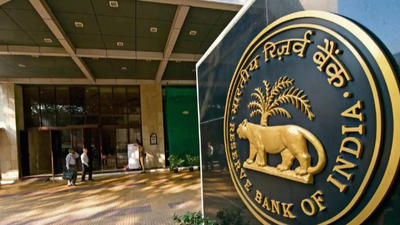NEW DELHI: The aggregate demand is poised to shrug off the temporary slowdown in momentum in the second quarter of FY25, as festival demand picks up pace and consumer confidence improves, the Reserve Bank of India’s (RBI) October bulletin said on Monday.
“In spite of geopolitical tensions, India’s growth outlook is supported by robust domestic engines,” the Bulletin said in its article, ‘State of the Economy’.
Some high frequency indicators have shown a slackening of momentum in the second quarter of 2024-25 partly attributable to “idiosyncratic factors” like unusually heavy rains in August and September, the Bulletin said. But looking ahead, private investment is showing some encouraging signs in terms of lead indicators while consumption spending is shaping up for a festival season revival, it said.
The RBI has projected India’s economy to grow at 7.2% in FY25, but many economists expect the growth to be close to 6.8%, given slowdown in high frequency indicators. In fact, the RBI’s own Economic Activity Index (EAI) has projected GDP to grow 6.8% in Q2FY25, 20 basis points lower than the projection made in the monetary policy statement.
Going forward, rural demand is expected to get a boost from the improved agricultural outlook. “Private investment should pick up steam in response to signs of pick-up in consumption demand and rising business optimism,” the Bulletin said.
With the financial sector ready to intermediate resources for productive investment, buffered by healthy balance sheets, and the government’s continued thrust on capex, the investment outlook appears bright, it said. “The ongoing strengthening of global trade could provide fillip to external demand for India’s exports although escalation of geopolitical tensions remains a potential threat.”
Analysts expect India’s merchandise exports to pick up slightly in the second half of FY25, despite uncertainties. In H1, goods’ exports grew 1%, and in H2, it expected to grow 4-5% year-on-year. For the full year, the Federation of Indian Export Organisation (FIEO) has projected exports at $450-$455 billion, as against $437 billion in FY24.
In terms of aggregate supply, above normal rainfall in the monsoon season augurs well for overall kharif production in the country as well as for reservoir storage, which brightens the rabi season outlook, the Bulletin said.
The increased likelihood of La Niña conditions developing during the post-monsoon season of 2024 is beneficial for overall precipitation, although the possibility of excessive rainfall damaging the standing kharif crops remains a risk, it said.
In the coming months, uncertainty surrounding global economic prospects could persist in the near term with heightened geopolitical tensions in the Middle East. Increase in commodity prices, especially of crude oil and metals, raise pass-through risks for net importer countries. “The future course of monetary policy the world over would, therefore, have to take into account the risks to both growth and inflation from recent commodity price shocks,” the Bulletin said.
Source: The Financial Express


 Palestinian and Israeli Communists Agree On A Free Palestine State
Palestinian and Israeli Communists Agree On A Free Palestine State 